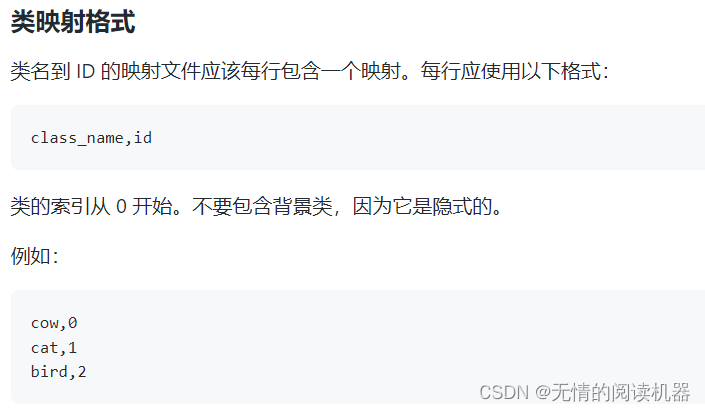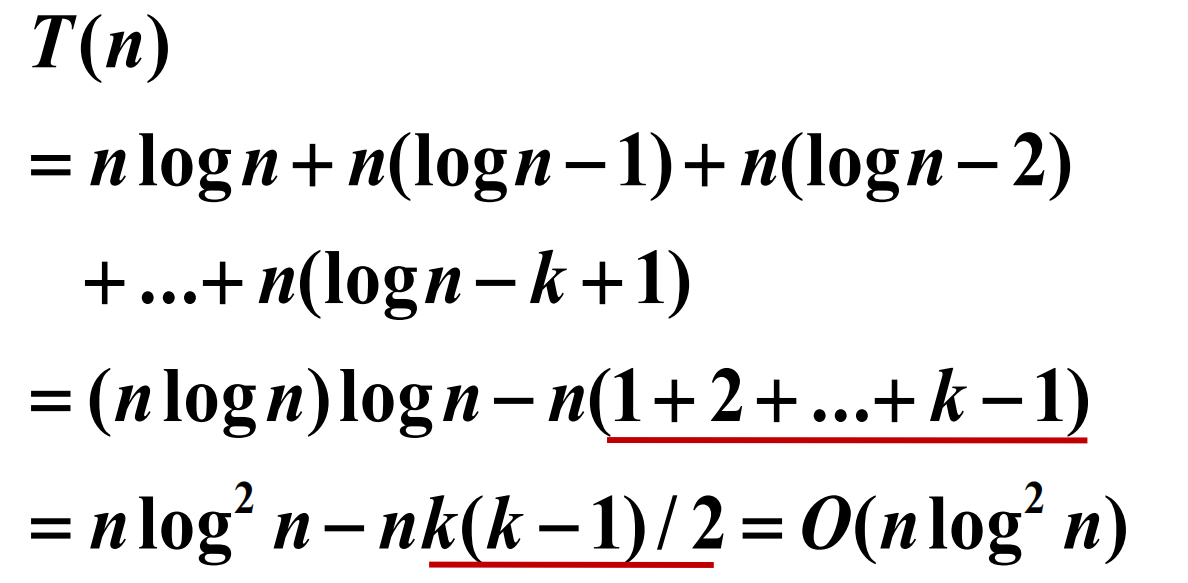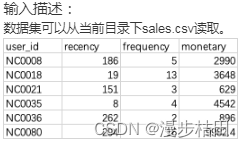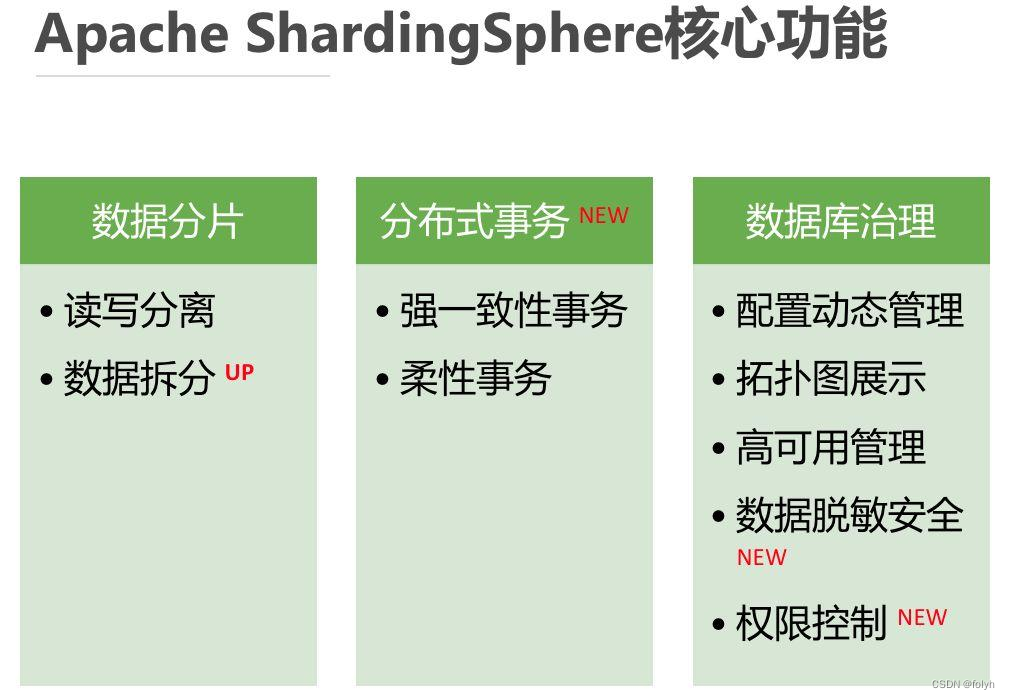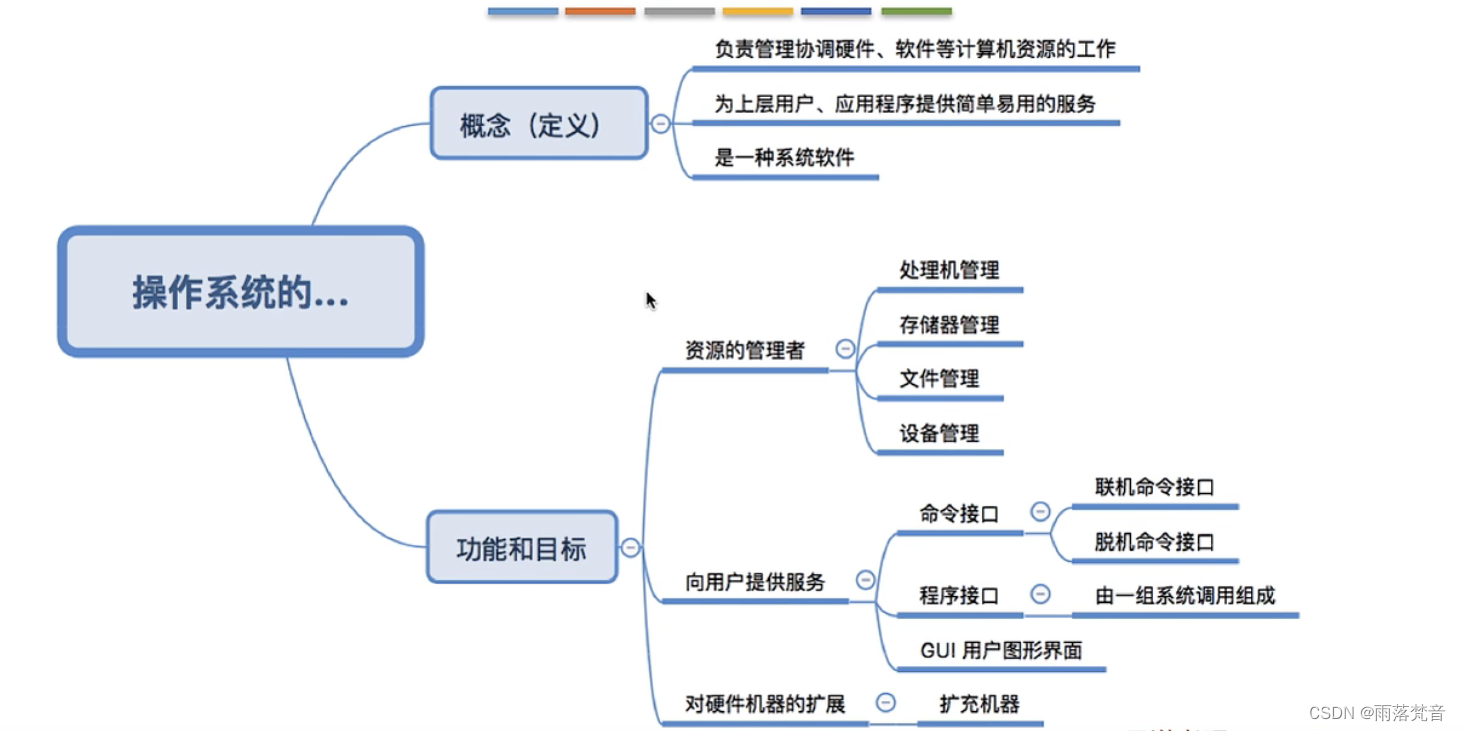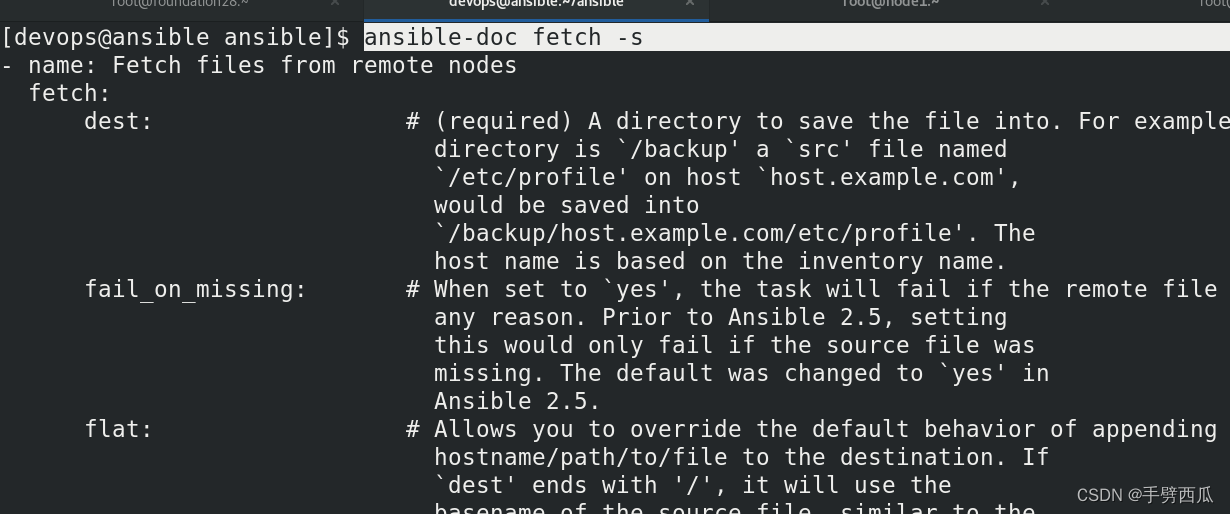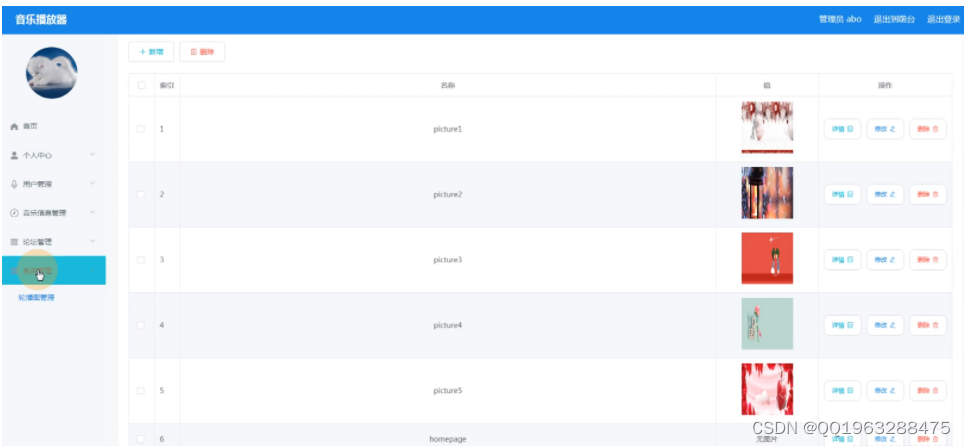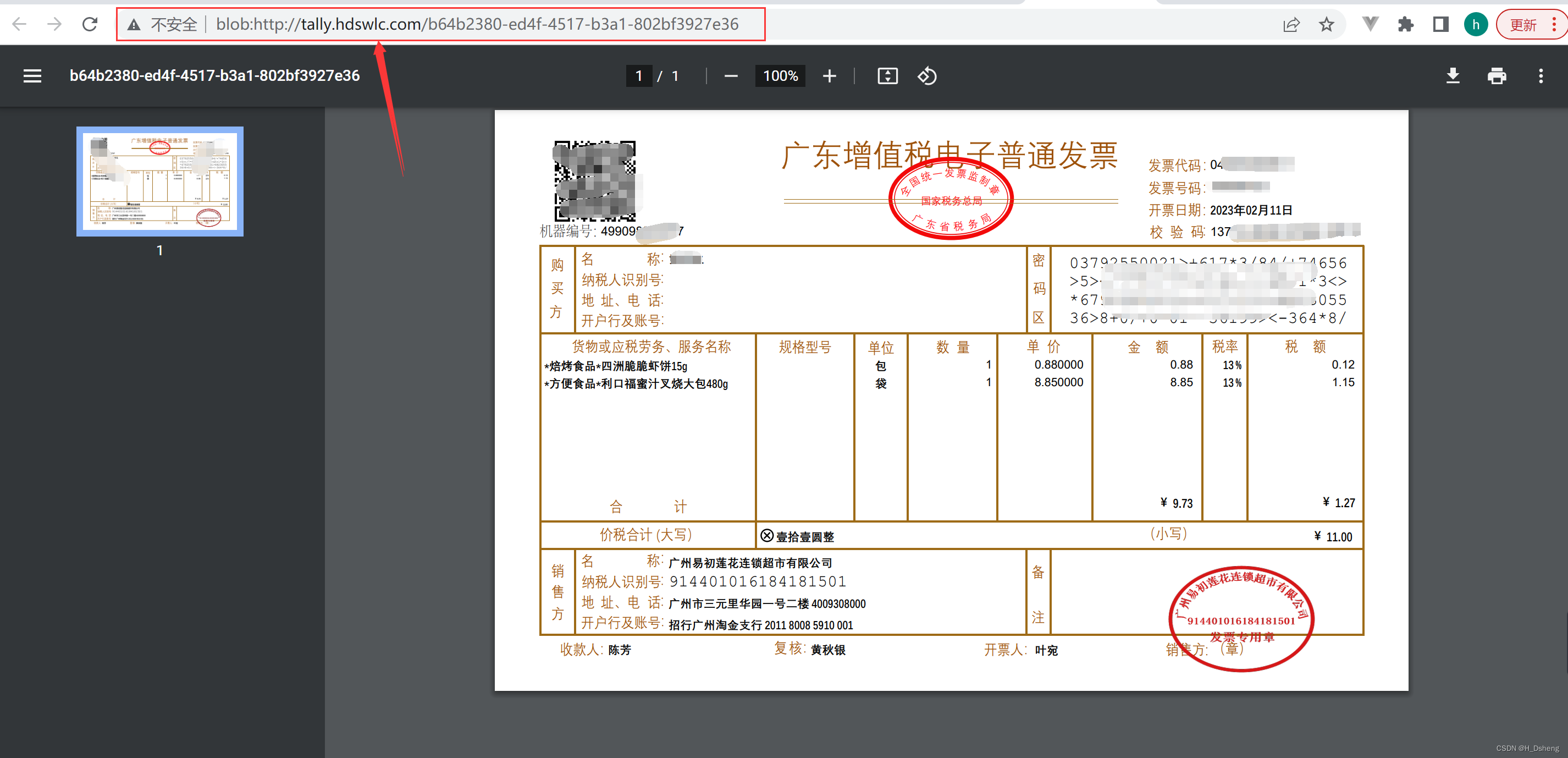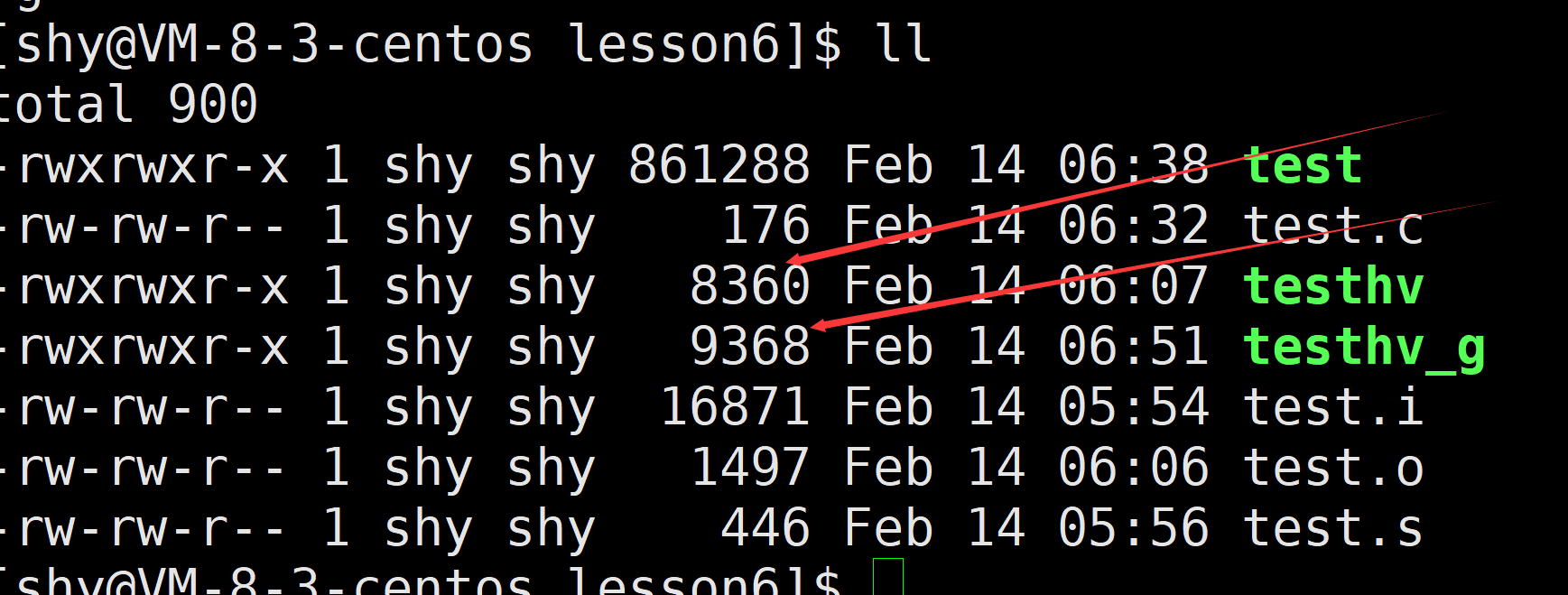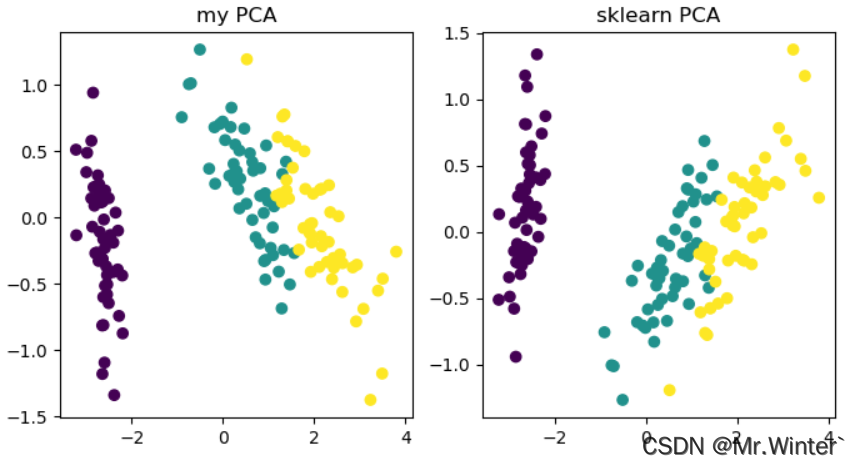1.损失函数
1)原理
本文一个核心的贡献点就是 focal loss。总损失依然分为两部分,一部分是分类损失,一部分是回归损失。
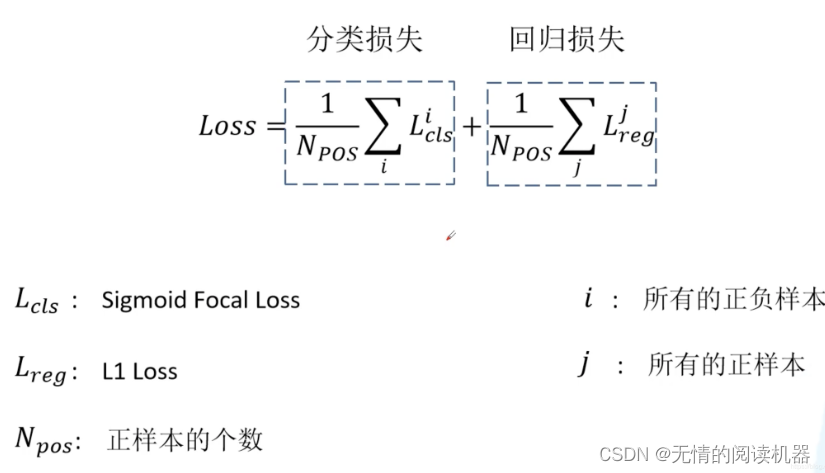
在讲分类损失之前,我们来回顾一下二分类交叉熵损失 (binary_cross_entropy)。

计算代码如下:
import numpy as npy_true = np.array([0., 1., 1., 1., 1., 1., 1., 1., 1., 1.])
y_pred = np.array([0.2, 0.8, 0.8, 0.8, 0.8, 0.8, 0.8, 0.8, 0.8, 0.8])my_loss = - y_true * np.log(y_pred) - (1 - y_true) * np.log(1 - y_pred)
mean_my_loss = np.mean(my_loss)
print("mean_my_loss:",mean_my_loss)![]()
调用pytorch自带的函数计算
import torch.nn.functional as F
import numpy as np
import torchtorch_pred = torch.tensor(y_pred)
torch_true = torch.tensor(y_true)
bce_loss = F.binary_cross_entropy(torch_pred, torch_true)
print('bce_loss:', bce_loss)

现在回到focal loss,Focal loss的起源是二分类交叉熵。
二分类的交叉熵损失还可以如下表示,其中y∈{1,-1},1代表候选框是正样本,-1代表是负样本:

为了表示方便,可以定义如下公式:

那么问题来了,应用场景如下:
在one-stage 物体检测模型中,一张图中能匹配到目标的候选框(正样本)大概是十几个到几十个,然后没有匹配到的候选框(负样本)10 的四次方到五次方。这些负样本中,大部分都是简单易分的样本,对于训练样本起不到作用,反而淹没了有助于训练的样本。
举个例子,正样本有50个,损失是3,负样本是10000个,损失是0.1
那么50x3 = 150,10000x0.1=1000

所以,为了平衡交叉熵,采用了系数αt,当是正样本的时候,αt = α,负样本的时候 αt=1-α,α∈[0,1]

αt能平衡正负样本的权重,但是不能区分哪些是困难样本,哪些是容易样本(是否对训练有帮助)。
所以继续引入公式,这样就解决了区分样本容易性的问题:

最后,结合两个公式,形成最终的公式。

展开形式如下

现在来看一下效果,p代表预测候选框是正样本的概率,y是候选框实际上是正样本还是负样本,CE是普通交叉熵计算的损失,FL是focal loss,rate是缩小的比例。可以看出,最后两行难区分样本的rate很小。

2)代码
import numpy as np
import torch
import torch.nn as nn
class FocalLoss(nn.Module):
#def __init__(self):
def forward(self, classifications, regressions, anchors, annotations):
alpha = 0.25
gamma = 2.0
# classifications是预测结果
batch_size = classifications.shape[0]
# 分类loss
classification_losses = []
# 回归loss
regression_losses = []
# anchors的形状是 [1, 每层anchor数量之和 , 4]
anchor = anchors[0, :, :]
anchor_widths = anchor[:, 2] - anchor[:, 0] # x2-x1
anchor_heights = anchor[:, 3] - anchor[:, 1] # y2-y1
anchor_ctr_x = anchor[:, 0] + 0.5 * anchor_widths # 中心点x坐标
anchor_ctr_y = anchor[:, 1] + 0.5 * anchor_heights # 中心点y坐标
for j in range(batch_size):
# classifications的shape [batch,所有anchor的数量,分类数]
classification = classifications[j, :, :]
# classifications的shape [batch,所有anchor的数量,分类数]
regression = regressions[j, :, :]
bbox_annotation = annotations[j, :, :]
bbox_annotation = bbox_annotation[bbox_annotation[:, 4] != -1]
classification = torch.clamp(classification, 1e-4, 1.0 - 1e-4)
if bbox_annotation.shape[0] == 0:
if torch.cuda.is_available():
alpha_factor = torch.ones(classification.shape).cuda() * alpha
alpha_factor = 1. - alpha_factor
focal_weight = classification
focal_weight = alpha_factor * torch.pow(focal_weight, gamma)
bce = -(torch.log(1.0 - classification))
# cls_loss = focal_weight * torch.pow(bce, gamma)
cls_loss = focal_weight * bce
classification_losses.append(cls_loss.sum())
regression_losses.append(torch.tensor(0).float().cuda())
else:
alpha_factor = torch.ones(classification.shape) * alpha
alpha_factor = 1. - alpha_factor
focal_weight = classification
focal_weight = alpha_factor * torch.pow(focal_weight, gamma)
bce = -(torch.log(1.0 - classification))
# cls_loss = focal_weight * torch.pow(bce, gamma)
cls_loss = focal_weight * bce
classification_losses.append(cls_loss.sum())
regression_losses.append(torch.tensor(0).float())
continue
# 每个anchor 与 每个标注的真实框的iou
IoU = calc_iou(anchors[0, :, :], bbox_annotation[:, :4]) # num_anchors x num_annotations
# 每个anchor对应的最大的iou (anchor与grandtruce进行配对)
# 得到了配对的索引和对应的最大值
IoU_max, IoU_argmax = torch.max(IoU, dim=1)
#import pdb
#pdb.set_trace()
# compute the loss for classification
# classification 的shape[anchor总数,分类数]
targets = torch.ones(classification.shape) * -1
if torch.cuda.is_available():
targets = targets.cuda()
# 判断每个元素是否小于0.4 小于就返回true(anchor对应的最大iou<0.4,那就是背景)
targets[torch.lt(IoU_max, 0.4), :] = 0
# 最大iou大于0.5的anchor索引
positive_indices = torch.ge(IoU_max, 0.5)
num_positive_anchors = positive_indices.sum()
assigned_annotations = bbox_annotation[IoU_argmax, :]
targets[positive_indices, :] = 0
targets[positive_indices, assigned_annotations[positive_indices, 4].long()] = 1
if torch.cuda.is_available():
alpha_factor = torch.ones(targets.shape).cuda() * alpha
else:
alpha_factor = torch.ones(targets.shape) * alpha
alpha_factor = torch.where(torch.eq(targets, 1.), alpha_factor, 1. - alpha_factor)
focal_weight = torch.where(torch.eq(targets, 1.), 1. - classification, classification)
focal_weight = alpha_factor * torch.pow(focal_weight, gamma)
bce = -(targets * torch.log(classification) + (1.0 - targets) * torch.log(1.0 - classification))
# cls_loss = focal_weight * torch.pow(bce, gamma)
cls_loss = focal_weight * bce
if torch.cuda.is_available():
cls_loss = torch.where(torch.ne(targets, -1.0), cls_loss, torch.zeros(cls_loss.shape).cuda())
else:
cls_loss = torch.where(torch.ne(targets, -1.0), cls_loss, torch.zeros(cls_loss.shape))
classification_losses.append(cls_loss.sum()/torch.clamp(num_positive_anchors.float(), min=1.0))
# compute the loss for regression
if positive_indices.sum() > 0:
assigned_annotations = assigned_annotations[positive_indices, :]
anchor_widths_pi = anchor_widths[positive_indices]
anchor_heights_pi = anchor_heights[positive_indices]
anchor_ctr_x_pi = anchor_ctr_x[positive_indices]
anchor_ctr_y_pi = anchor_ctr_y[positive_indices]
gt_widths = assigned_annotations[:, 2] - assigned_annotations[:, 0]
gt_heights = assigned_annotations[:, 3] - assigned_annotations[:, 1]
gt_ctr_x = assigned_annotations[:, 0] + 0.5 * gt_widths
gt_ctr_y = assigned_annotations[:, 1] + 0.5 * gt_heights
# clip widths to 1
gt_widths = torch.clamp(gt_widths, min=1)
gt_heights = torch.clamp(gt_heights, min=1)
targets_dx = (gt_ctr_x - anchor_ctr_x_pi) / anchor_widths_pi
targets_dy = (gt_ctr_y - anchor_ctr_y_pi) / anchor_heights_pi
targets_dw = torch.log(gt_widths / anchor_widths_pi)
targets_dh = torch.log(gt_heights / anchor_heights_pi)
targets = torch.stack((targets_dx, targets_dy, targets_dw, targets_dh))
targets = targets.t()
if torch.cuda.is_available():
targets = targets/torch.Tensor([[0.1, 0.1, 0.2, 0.2]]).cuda()
else:
targets = targets/torch.Tensor([[0.1, 0.1, 0.2, 0.2]])
negative_indices = 1 + (~positive_indices)
regression_diff = torch.abs(targets - regression[positive_indices, :])
regression_loss = torch.where(
torch.le(regression_diff, 1.0 / 9.0),
0.5 * 9.0 * torch.pow(regression_diff, 2),
regression_diff - 0.5 / 9.0
)
regression_losses.append(regression_loss.mean())
else:
if torch.cuda.is_available():
regression_losses.append(torch.tensor(0).float().cuda())
else:
regression_losses.append(torch.tensor(0).float())
return torch.stack(classification_losses).mean(dim=0, keepdim=True), torch.stack(regression_losses).mean(dim=0, keepdim=True)
3)分类损失的计算过程
假设一张图片有n个anchor,有m个grandtrue,有L个类别
1.得到anchor和每一个grandtrue的IOU
# 每个anchor 与 每个标注的真实框的iou
IoU = calc_iou(anchors[0, :, :], bbox_annotation[:, :4]) # num_anchors x num_annotations
2.得到每个anchor最大的IOU,以及对应的grandtrue
IoU_max, IoU_argmax = torch.max(IoU, dim=1)
3.初始化一个分类目标结果表,默认值是-1
targets = torch.ones(classification.shape) * -1 
4.如果某个anchor的最大IOU<0.4,那么它对应的分类全为0
targets[torch.lt(IoU_max, 0.4), :] = 0例如:iou3m = 0.3,ioun2 = 0.2
此时,上述分类结果表就更新anchor3,和anchorn的分类结果

5.把每个anchor关联对应的grandtruce信息,其中参数5是预测的类别
# 最大iou大于0.5的anchor索引
positive_indices = torch.ge(IoU_max, 0.5)
num_positive_anchors = positive_indices.sum()
assigned_annotations = bbox_annotation[IoU_argmax, :]
 6.如果anchor的最大IOU>0.5,那么根据参数5,修改对应的分类结果表为one-hot形式
6.如果anchor的最大IOU>0.5,那么根据参数5,修改对应的分类结果表为one-hot形式
targets[positive_indices, :] = 0
targets[positive_indices, assigned_annotations[positive_indices, 4].long()] = 1例如 iou12 = 0.6,参数5 = class2
修改分类结果表

7. 得到损失的权重部分
alpha_factor = torch.where(torch.eq(targets, 1.), alpha_factor, 1. - alpha_factor)
focal_weight = torch.where(torch.eq(targets, 1.), 1. - classification, classification)
focal_weight = alpha_factor * torch.pow(focal_weight, gamma)
α表,将0的地方替换成1-α,1的地方替换成 α

p表 将0的地方原概率,1的地方换成1-p

权重表的元素就是两表对应元素的乘积
8.得到损失的损失部分
bce = -(targets * torch.log(classification) + (1.0 - targets) * torch.log(1.0 - classification))
9.得到初步的损失结果
cls_loss = focal_weight * bce10.将分类结果表原本是-1的地方,对应的损失变成0
例如anchor2最大iou是0.45,介于0.4与0.5之间,我们就不计算他的损失,忽略不计
if torch.cuda.is_available():
cls_loss = torch.where(torch.ne(targets, -1.0), cls_loss, torch.zeros(cls_loss.shape).cuda())
else:
cls_loss = torch.where(torch.ne(targets, -1.0), cls_loss, torch.zeros(cls_loss.shape))11.损失汇总
classification_losses.append(cls_loss.sum()/torch.clamp(num_positive_anchors.float(), min=1.0))2.网络结构
整体来讲,网络采用了FPN模型

 这个结构也是可以变的(可以灵活改变),如下所示
这个结构也是可以变的(可以灵活改变),如下所示

模型如下所示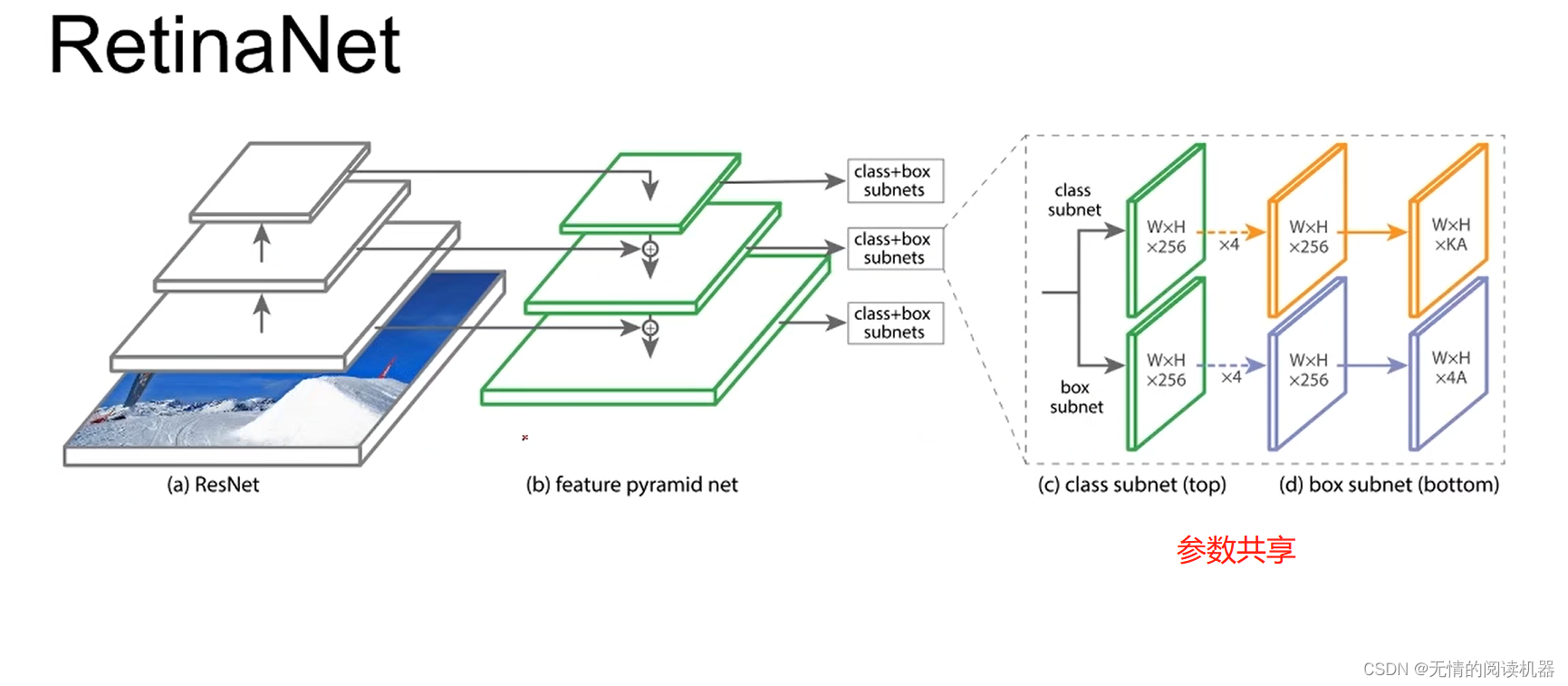
其中每个位置的anchor是9个,三个形状x三个比例
K是分类的数量,A是每个位置anchor是数量
4A,4是四个参数可以确定anchor的位置和大小。
3.代码讲解:
1.FPN分支部分

self.P5_1 = nn.Conv2d(C5_size, feature_size, kernel_size=1, stride=1, padding=0)
self.P5_upsampled = nn.Upsample(scale_factor=2, mode='nearest')
self.P5_2 = nn.Conv2d(feature_size, feature_size, kernel_size=3, stride=1, padding=1)
self.P4_1 = nn.Conv2d(C4_size, feature_size, kernel_size=1, stride=1, padding=0)
self.P4_upsampled = nn.Upsample(scale_factor=2, mode='nearest')
self.P4_2 = nn.Conv2d(feature_size, feature_size, kernel_size=3, stride=1, padding=1)
self.P3_1 = nn.Conv2d(C3_size, feature_size, kernel_size=1, stride=1, padding=0)
self.P3_2 = nn.Conv2d(feature_size, feature_size, kernel_size=3, stride=1, padding=1) 
self.P6 = nn.Conv2d(C5_size, feature_size, kernel_size=3, stride=2, padding=1) 
self.P7_1 = nn.ReLU()
self.P7_2 = nn.Conv2d(feature_size, feature_size, kernel_size=3, stride=2, padding=1)forward
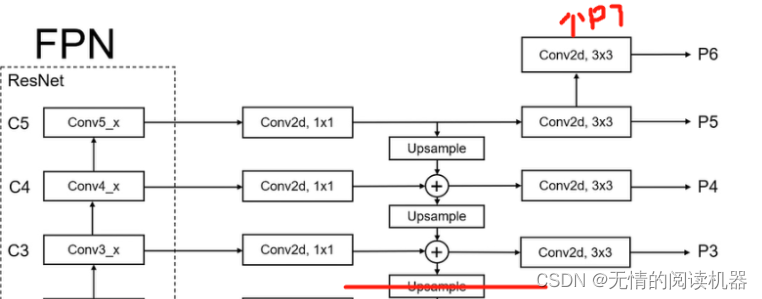
def forward(self, inputs):
#inputs 是主干模块conv3、conv4、conv5的输出
C3, C4, C5 = inputs
P5_x = self.P5_1(C5)
P5_upsampled_x = self.P5_upsampled(P5_x)
P5_x = self.P5_2(P5_x)
P4_x = self.P4_1(C4)
P4_x = P5_upsampled_x + P4_x
P4_upsampled_x = self.P4_upsampled(P4_x)
P4_x = self.P4_2(P4_x)
P3_x = self.P3_1(C3)
P3_x = P3_x + P4_upsampled_x
P3_x = self.P3_2(P3_x)
P6_x = self.P6(C5)
P7_x = self.P7_1(P6_x)
P7_x = self.P7_2(P7_x)
return [P3_x, P4_x, P5_x, P6_x, P7_x]
2.回归自网络

class RegressionModel(nn.Module):
def __init__(self, num_features_in, num_anchors=9, feature_size=256):
super(RegressionModel, self).__init__()
#其实num_features_in就等于256
self.conv1 = nn.Conv2d(num_features_in, feature_size, kernel_size=3, padding=1)
self.act1 = nn.ReLU()
self.conv2 = nn.Conv2d(feature_size, feature_size, kernel_size=3, padding=1)
self.act2 = nn.ReLU()
self.conv3 = nn.Conv2d(feature_size, feature_size, kernel_size=3, padding=1)
self.act3 = nn.ReLU()
self.conv4 = nn.Conv2d(feature_size, feature_size, kernel_size=3, padding=1)
self.act4 = nn.ReLU()
#4个参数就能确定anchor的大小
self.output = nn.Conv2d(feature_size, num_anchors * 4, kernel_size=3, padding=1)
def forward(self, x):
out = self.conv1(x)
out = self.act1(out)
out = self.conv2(out)
out = self.act2(out)
out = self.conv3(out)
out = self.act3(out)
out = self.conv4(out)
out = self.act4(out)
out = self.output(out)
# out is B x C x W x H, with C = 4*num_anchors
out = out.permute(0, 2, 3, 1)
#相当于展平了,-1的位置相当于所有anchor的数目
return out.contiguous().view(out.shape[0], -1, 4)3.分类网络

class ClassificationModel(nn.Module):
def __init__(self, num_features_in, num_anchors=9, num_classes=80, prior=0.01, feature_size=256):
super(ClassificationModel, self).__init__()
self.num_classes = num_classes
self.num_anchors = num_anchors
self.conv1 = nn.Conv2d(num_features_in, feature_size, kernel_size=3, padding=1)
self.act1 = nn.ReLU()
self.conv2 = nn.Conv2d(feature_size, feature_size, kernel_size=3, padding=1)
self.act2 = nn.ReLU()
self.conv3 = nn.Conv2d(feature_size, feature_size, kernel_size=3, padding=1)
self.act3 = nn.ReLU()
self.conv4 = nn.Conv2d(feature_size, feature_size, kernel_size=3, padding=1)
self.act4 = nn.ReLU()
self.output = nn.Conv2d(feature_size, num_anchors * num_classes, kernel_size=3, padding=1)
self.output_act = nn.Sigmoid()
def forward(self, x):
out = self.conv1(x)
out = self.act1(out)
out = self.conv2(out)
out = self.act2(out)
out = self.conv3(out)
out = self.act3(out)
out = self.conv4(out)
out = self.act4(out)
out = self.output(out)
out = self.output_act(out)
# out is B x C x W x H, with C = n_classes + n_anchors
out1 = out.permute(0, 2, 3, 1)
batch_size, width, height, channels = out1.shape
out2 = out1.view(batch_size, width, height, self.num_anchors, self.num_classes)
return out2.contiguous().view(x.shape[0], -1, self.num_classes)4.主干网络、训练和预测过程
1.网络结构

经过conv1缩小4倍,经过conv2不变,conv3、v4,v5都缩小两倍,p5到p6缩小两倍,p6到p7缩小两倍
p3相对于图片缩小了2的3次方,p4相对于图片缩小了2的4次方,以此类推
class ResNet(nn.Module):
#layers是层数
def __init__(self, num_classes, block, layers):
self.inplanes = 64
super(ResNet, self).__init__()
#这个是输入 conv1
self.conv1 = nn.Conv2d(3, 64, kernel_size=7, stride=2, padding=3, bias=False)
self.bn1 = nn.BatchNorm2d(64)
self.relu = nn.ReLU(inplace=True)
self.maxpool = nn.MaxPool2d(kernel_size=3, stride=2, padding=1)
#这是c2
self.layer1 = self._make_layer(block, 64, layers[0])
#这是c3
self.layer2 = self._make_layer(block, 128, layers[1], stride=2)
#这是c4
self.layer3 = self._make_layer(block, 256, layers[2], stride=2)
#这是c5
self.layer4 = self._make_layer(block, 512, layers[3], stride=2)
#得到c3、c4、c5输出的通道数
if block == BasicBlock:
fpn_sizes = [self.layer2[layers[1] - 1].conv2.out_channels, self.layer3[layers[2] - 1].conv2.out_channels,
self.layer4[layers[3] - 1].conv2.out_channels]
elif block == Bottleneck:
fpn_sizes = [self.layer2[layers[1] - 1].conv3.out_channels, self.layer3[layers[2] - 1].conv3.out_channels,
self.layer4[layers[3] - 1].conv3.out_channels]
else:
raise ValueError(f"Block type {block} not understood")
#创建FPN的分支部分
self.fpn = PyramidFeatures(fpn_sizes[0], fpn_sizes[1], fpn_sizes[2])
#创建回归网络
self.regressionModel = RegressionModel(256)
#创建分类网络
self.classificationModel = ClassificationModel(256, num_classes=num_classes)
self.anchors = Anchors()
self.regressBoxes = BBoxTransform()
self.clipBoxes = ClipBoxes()
self.focalLoss = losses.FocalLoss()
#权重初始化
for m in self.modules():
if isinstance(m, nn.Conv2d):
n = m.kernel_size[0] * m.kernel_size[1] * m.out_channels
m.weight.data.normal_(0, math.sqrt(2. / n))
elif isinstance(m, nn.BatchNorm2d):
m.weight.data.fill_(1)
m.bias.data.zero_()
prior = 0.01
self.classificationModel.output.weight.data.fill_(0)
self.classificationModel.output.bias.data.fill_(-math.log((1.0 - prior) / prior))
self.regressionModel.output.weight.data.fill_(0)
self.regressionModel.output.bias.data.fill_(0)
#冻结bn层参数更新,因为预训练的参数已经很好了
self.freeze_bn()
def _make_layer(self, block, planes, blocks, stride=1):
downsample = None
if stride != 1 or self.inplanes != planes * block.expansion:
downsample = nn.Sequential(
nn.Conv2d(self.inplanes, planes * block.expansion,
kernel_size=1, stride=stride, bias=False),
nn.BatchNorm2d(planes * block.expansion),
)
layers = [block(self.inplanes, planes, stride, downsample)]
self.inplanes = planes * block.expansion
for i in range(1, blocks):
layers.append(block(self.inplanes, planes))
return nn.Sequential(*layers)
def freeze_bn(self):
'''Freeze BatchNorm layers.'''
for layer in self.modules():
if isinstance(layer, nn.BatchNorm2d):
layer.eval()2.训练过程和预测过程
1)anchor的调整
生成的预测值 regression [batch, anchor的数量,4] regression[:, :, 0]和[:, :, 1]用来移动anchor中心点 [:, :, 2]和[:, :, 3]用来改变框子的长度
import torch.nn as nn
import torch
import numpy as np
# 生成的预测值 regression [batch, anchor的数量,4] regression[:, :, 0]和[:, :, 1]用来移动anchor中心点 [:, :, 2]和[:, :, 3]用来改变框子的长度
class BBoxTransform(nn.Module):
def __init__(self, mean=None, std=None):
super(BBoxTransform, self).__init__()
if mean is None:
if torch.cuda.is_available():
self.mean = torch.from_numpy(np.array([0, 0, 0, 0]).astype(np.float32)).cuda()
else:
self.mean = torch.from_numpy(np.array([0, 0, 0, 0]).astype(np.float32))
else:
self.mean = mean
if std is None:
if torch.cuda.is_available():
self.std = torch.from_numpy(np.array([0.1, 0.1, 0.2, 0.2]).astype(np.float32)).cuda()
else:
self.std = torch.from_numpy(np.array([0.1, 0.1, 0.2, 0.2]).astype(np.float32))
else:
self.std = std
def forward(self, boxes, deltas):
#boxes就是图片所有的anchor[batch , 一张图片上anchor的总数 ,4]
widths = boxes[:, :, 2] - boxes[:, :, 0] # x2 - x1 = 宽
heights = boxes[:, :, 3] - boxes[:, :, 1] # y2 - y1 = 高
ctr_x = boxes[:, :, 0] + 0.5 * widths # x1 + 宽/2 = 中心点 x
ctr_y = boxes[:, :, 1] + 0.5 * heights # y1 + 高/2 = 中心点 y
dx = deltas[:, :, 0] * self.std[0] + self.mean[0]
dy = deltas[:, :, 1] * self.std[1] + self.mean[1]
dw = deltas[:, :, 2] * self.std[2] + self.mean[2]
dh = deltas[:, :, 3] * self.std[3] + self.mean[3]
pred_ctr_x = ctr_x + dx * widths
pred_ctr_y = ctr_y + dy * heights
pred_w = torch.exp(dw) * widths
pred_h = torch.exp(dh) * heights
pred_boxes_x1 = pred_ctr_x - 0.5 * pred_w
pred_boxes_y1 = pred_ctr_y - 0.5 * pred_h
pred_boxes_x2 = pred_ctr_x + 0.5 * pred_w
pred_boxes_y2 = pred_ctr_y + 0.5 * pred_h
pred_boxes = torch.stack([pred_boxes_x1, pred_boxes_y1, pred_boxes_x2, pred_boxes_y2], dim=2)
return pred_boxes2总过程
def forward(self, inputs):
if self.training:
img_batch, annotations = inputs
else:
img_batch = inputs
x = self.conv1(img_batch)
x = self.bn1(x)
x = self.relu(x)
x = self.maxpool(x)
x1 = self.layer1(x)
x2 = self.layer2(x1)
x3 = self.layer3(x2)
x4 = self.layer4(x3)
features = self.fpn([x2, x3, x4])
#shape[batch,每次anchor总数之和,4个值]
regression = torch.cat([self.regressionModel(feature) for feature in features], dim=1)
# shape[batch,每次anchor总数之和,分类个数]
classification = torch.cat([self.classificationModel(feature) for feature in features], dim=1)
anchors = self.anchors(img_batch)
if self.training:
return self.focalLoss(classification, regression, anchors, annotations)
else:
#得到调节参数之后的框子
transformed_anchors = self.regressBoxes(anchors, regression)
#保证框子在图片之内
transformed_anchors = self.clipBoxes(transformed_anchors, img_batch)
finalResult = [[], [], []]
#每个框对应类别的置信度
finalScores = torch.Tensor([])
#框对应的分类序号:第几类
finalAnchorBoxesIndexes = torch.Tensor([]).long()
#框的坐标
finalAnchorBoxesCoordinates = torch.Tensor([])
if torch.cuda.is_available():
finalScores = finalScores.cuda()
finalAnchorBoxesIndexes = finalAnchorBoxesIndexes.cuda()
finalAnchorBoxesCoordinates = finalAnchorBoxesCoordinates.cuda()
for i in range(classification.shape[2]):
scores = torch.squeeze(classification[:, :, i])
scores_over_thresh = (scores > 0.05)
if scores_over_thresh.sum() == 0:
# no boxes to NMS, just continue
continue
scores = scores[scores_over_thresh]
anchorBoxes = torch.squeeze(transformed_anchors)
anchorBoxes = anchorBoxes[scores_over_thresh]
anchors_nms_idx = nms(anchorBoxes, scores, 0.5)
finalResult[0].extend(scores[anchors_nms_idx])
finalResult[1].extend(torch.tensor([i] * anchors_nms_idx.shape[0]))
finalResult[2].extend(anchorBoxes[anchors_nms_idx])
finalScores = torch.cat((finalScores, scores[anchors_nms_idx]))
finalAnchorBoxesIndexesValue = torch.tensor([i] * anchors_nms_idx.shape[0])
if torch.cuda.is_available():
finalAnchorBoxesIndexesValue = finalAnchorBoxesIndexesValue.cuda()
finalAnchorBoxesIndexes = torch.cat((finalAnchorBoxesIndexes, finalAnchorBoxesIndexesValue))
finalAnchorBoxesCoordinates = torch.cat((finalAnchorBoxesCoordinates, anchorBoxes[anchors_nms_idx]))
return [finalScores, finalAnchorBoxesIndexes, finalAnchorBoxesCoordinates]5.两种block的定义
import torch.nn as nn
def conv3x3(in_planes, out_planes, stride=1):
"""3x3 convolution with padding"""
return nn.Conv2d(in_planes, out_planes, kernel_size=3, stride=stride,
padding=1, bias=False)
class BasicBlock(nn.Module):
expansion = 1
def __init__(self, inplanes, planes, stride=1, downsample=None):
super(BasicBlock, self).__init__()
self.conv1 = conv3x3(inplanes, planes, stride)
self.bn1 = nn.BatchNorm2d(planes)
self.relu = nn.ReLU(inplace=True)
self.conv2 = conv3x3(planes, planes)
self.bn2 = nn.BatchNorm2d(planes)
self.downsample = downsample
self.stride = stride
def forward(self, x):
residual = x
out = self.conv1(x)
out = self.bn1(out)
out = self.relu(out)
out = self.conv2(out)
out = self.bn2(out)
if self.downsample is not None:
residual = self.downsample(x)
out += residual
out = self.relu(out)
return out
class Bottleneck(nn.Module):
expansion = 4
def __init__(self, inplanes, planes, stride=1, downsample=None):
super(Bottleneck, self).__init__()
self.conv1 = nn.Conv2d(inplanes, planes, kernel_size=1, bias=False)
self.bn1 = nn.BatchNorm2d(planes)
self.conv2 = nn.Conv2d(planes, planes, kernel_size=3, stride=stride,
padding=1, bias=False)
self.bn2 = nn.BatchNorm2d(planes)
self.conv3 = nn.Conv2d(planes, planes * 4, kernel_size=1, bias=False)
self.bn3 = nn.BatchNorm2d(planes * 4)
self.relu = nn.ReLU(inplace=True)
self.downsample = downsample
self.stride = stride
def forward(self, x):
residual = x
out = self.conv1(x)
out = self.bn1(out)
out = self.relu(out)
out = self.conv2(out)
out = self.bn2(out)
out = self.relu(out)
out = self.conv3(out)
out = self.bn3(out)
if self.downsample is not None:
residual = self.downsample(x)
out += residual
out = self.relu(out)
return out6.anchor
1.每个位置的生成anchor函数
anchor的生成都是以原图为基准的这个函数的作用是生成一个位置中所有的anchor,形式是(x1,y1,x2,y2)并且(X1,y1)和(x2,y2)关于中心对称,这样给定一个中点,可以直接拿(x1,y1,x2,y2)计算出相应的anchor
大概功能步骤:
1.确定每个位置anchor的数量:宽高比例数量x边长缩放比例数量
2.得到anchor的标准边长缩放后的结果 :base_size x scales
3.通过上述结果得到标准面积:(base_size x scales)的平方
2.通过h = sqrt(areas / ratio)和w = h * ratio得到宽高
3.得到每个anchor的两个坐标 (0-h/2 , 0-w/2) 和 (h/2 , w/2)
4.输出anchor
def generate_anchors(base_size=16, ratios=None, scales=None):
"""
Generate anchor (reference) windows by enumerating aspect ratios X
scales w.r.t. a reference window.
"""
if ratios is None:
ratios = np.array([0.5, 1, 2])
if scales is None:
scales = np.array([2 ** 0, 2 ** (1.0 / 3.0), 2 ** (2.0 / 3.0)])
#每个位置的anchor总数 n种规模 * m种比例
num_anchors = len(ratios) * len(scales)
# 初始化anchor的参数 x,y,w,h
anchors = np.zeros((num_anchors, 4))
# scale base_size
#np.tile(scales, (2, len(ratios))).T结果如下:
#[[1. 1. ]
# [1.25992105 1.25992105]
# [1.58740105 1.58740105]
# [1. 1. ]
# [1.25992105 1.25992105]
# [1.58740105 1.58740105]
# [1. 1. ]
# [1.25992105 1.25992105]
# [1.58740105 1.58740105]]
# shape (9, 2)
#设置anchor的w、h的基础大小(1:1)
anchors[:, 2:] = base_size * np.tile(scales, (2, len(ratios))).T
# 计算anchor的基础面积
#[area1,area2,area3,area1,area2,area3,area1,area2,area3]
areas = anchors[:, 2] * anchors[:, 3]
# correct for ratios
#利用面积和宽高比得到真正的宽和高
#根据公式1: areas / (w/h) = areas / ratio = hxh => h = sqrt(areas / ratio)
# 公式2:w = h * ratio
#np.repeat(ratios, len(scales))) = [0.5,0.5,0.5 ,1,1,1,2,2,2]
# 最终的效果就是 面积1的高宽,面积2的高宽,面积3的高宽
anchors[:, 2] = np.sqrt(areas / np.repeat(ratios, len(scales)))
anchors[:, 3] = anchors[:, 2] * np.repeat(ratios, len(scales))
# 转换anchor的形式 (x_ctr, y_ctr, w, h) -> (x1, y1, x2, y2)
# 左上角为中心点,形成9个anchor
anchors[:, 0::2] -= np.tile(anchors[:, 2] * 0.5, (2, 1)).T
anchors[:, 1::2] -= np.tile(anchors[:, 3] * 0.5, (2, 1)).T
return anchors演示步骤与效果如下所示:
pyramid_levels = [3, 4, 5, 6, 7]
strides = [2 ** x for x in pyramid_levels]
sizes = [2 ** (x + 2) for x in pyramid_levels]
ratios = np.array([0.5, 1, 2])
scales = np.array([2 ** 0, 2 ** (1.0 / 3.0), 2 ** (2.0 / 3.0)])num_anchors = len(ratios) * len(scales)
anchors = np.zeros((num_anchors, 4))anchors[:, 2:] = 16 * np.tile(scales, (2, len(ratios))).T
print("anchor的w、h的基础大小(1:1): ")
print(anchors[:, 2:])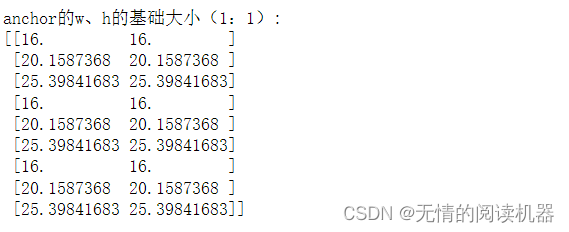
areas = anchors[:, 2] * anchors[:, 3]
print("基础面积:" )
print(areas)
anchors[:, 2] = np.sqrt(areas / np.repeat(ratios, len(scales)))
anchors[:, 3] = anchors[:, 2] * np.repeat(ratios, len(scales))
print("宽度:")
print(anchors[:, 2])
print("高度:")
print(anchors[:, 3])
anchors[:, 0::2] -= np.tile(anchors[:, 2] * 0.5, (2, 1)).T
anchors[:, 1::2] -= np.tile(anchors[:, 3] * 0.5, (2, 1)).T
print("一个位置生成的anchor如下")
print("个数为:",anchors.shape[0] )
print(anchors)
2.为每个位置生成anchor
基本思想还是:anchor的生成都是以原图为基准的
想要实现上述思想,最重要的就是得到特征图与原图的缩放比例(步长),比如stride=8,那么如果原图大小为(image_w,image_h)那么特征图相对于原图尺寸就缩小为(image_w/8 , image_h/8)(计算结果是上采样的)
那么每个anchor的位置是由特征图决定的
x1∈( 0,1,2,3......image_w/8) y1∈( 0,1,2,3......image_h/8)
生成anchor的位置就是 c_x1 = x1+0.5 ,c_y1 = y1+0.5
因为anchor的生成是以原图为基准的,所以要将anchor在特征图的位置放大到原图,即在原图上生成anchor的位置是 c_x = c_x1 * stride , c_y = c_y1 * stride
def shift(shape, stride, anchors):
shift_x = (np.arange(0, shape[1]) + 0.5) * stride
shift_y = (np.arange(0, shape[0]) + 0.5) * stride
shift_x, shift_y = np.meshgrid(shift_x, shift_y)
shifts = np.vstack((
shift_x.ravel(), shift_y.ravel(),
shift_x.ravel(), shift_y.ravel()
)).transpose()
# add A anchors (1, A, 4) to
# cell K shifts (K, 1, 4) to get
# shift anchors (K, A, 4)
# reshape to (K*A, 4) shifted anchors
A = anchors.shape[0]
K = shifts.shape[0]
all_anchors = (anchors.reshape((1, A, 4)) + shifts.reshape((1, K, 4)).transpose((1, 0, 2)))
all_anchors = all_anchors.reshape((K * A, 4))
return all_anchors在代码层面上(anchors.reshape((1, A, 4)) + shifts.reshape((1, K, 4)).transpose((1, 0, 2)))
用到了向量相加的广播机制
向量a1维度是(k,1,4),含义是有K个位置,每个位置1份数据,每份数据4个参数(中心点)
向量a2维度是(1,A,4),含义是1个位置,每个位置A份数据,每份数据4个参数(anchor相对于中心点的位置坐标)
其中k是要在图像的k个位置上生成anchor,A是每个位置生成几个anchor
首先a2要在第0维复制k次(A,4)向量(为每个位置复制)
然后a1要在第1维复制A次(4)向下(为每个位置的每个anchor复制)
3.图片的anchor生成过程
最后输出的形状是 [1, 每层anchor数量之和 , 4]
class Anchors(nn.Module):
def __init__(self, pyramid_levels=None, strides=None, sizes=None, ratios=None, scales=None):
super(Anchors, self).__init__()
#提取的特征
if pyramid_levels is None:
self.pyramid_levels = [3, 4, 5, 6, 7]
#步长,在每层中,一个像素等于原始图像中几个像素
if strides is None:
self.strides = [2 ** x for x in self.pyramid_levels] #这个参数设置我没看懂
#每层框子的基本边长
if sizes is None:
self.sizes = [2 ** (x + 2) for x in self.pyramid_levels] #这个参数设置我也没看懂
#长宽比例
if ratios is None:
self.ratios = np.array([0.5, 1, 2])
#边长缩放比例
if scales is None:
self.scales = np.array([2 ** 0, 2 ** (1.0 / 3.0), 2 ** (2.0 / 3.0)])
def forward(self, image):
#image是原图 shape为 batch,channel,w,h
#这一步是获得宽和高
image_shape = image.shape[2:]
image_shape = np.array(image_shape)
#‘//’是向下取整 整个式子相当于向上取整,因为不满1步的也要算1步
#图像大小除以步长
#在对应的每一层中,原图在该层对应的大小
image_shapes = [(image_shape + 2 ** x - 1) // (2 ** x) for x in self.pyramid_levels]
# 创建x1,y1 x2,y2 anchor的位置坐标
all_anchors = np.zeros((0, 4)).astype(np.float32)
for idx, p in enumerate(self.pyramid_levels):
#传入该层anchor的基本边长,生成对应大小的anchor
anchors = generate_anchors(base_size=self.sizes[idx], ratios=self.ratios, scales=self.scales)
# 传入生成的anchor,和该层相对于原图的大小
shifted_anchors = shift(image_shapes[idx], self.strides[idx], anchors)
# 循环遍历完成之后,all_anchors的shape为 [每层anchor数量之和, 4]
all_anchors = np.append(all_anchors, shifted_anchors, axis=0)
# 最后输出的形状是 [1, 每层anchor数量之和 , 4]
all_anchors = np.expand_dims(all_anchors, axis=0)
if torch.cuda.is_available():
return torch.from_numpy(all_anchors.astype(np.float32)).cuda()
else:
return torch.from_numpy(all_anchors.astype(np.float32))7.dataset
以csvdataset为例
